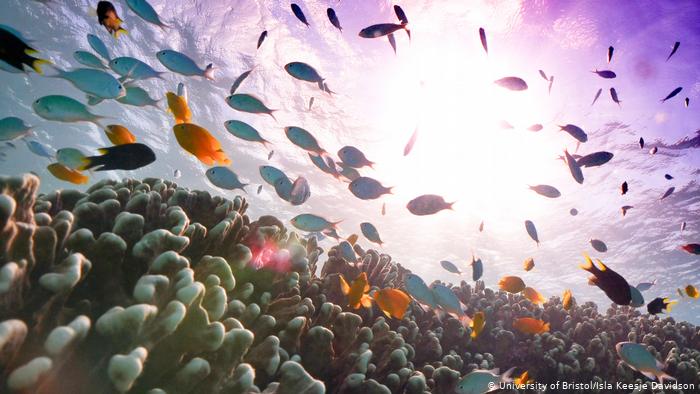Human-induced climate change has been cited as the key reason affecting the favourable environment required for corals to exist. Since the 1990s, half the corals in Australia’s Great Barrier Reef are dead. According to a recent study, the ability of the Great Barrier Reef to recover is also compromised

As climate activists urge the world leaders to shift fromfossil fuel to renewables and listen to the scientists, a recent research haspresented another grim report regarding nature’s creation, the Great BarrierReef.
According to Townsville-based Australian ResearchCouncil’s Centre of Excellence for Coral Reef Studies, the renowned naturalbeauty near Australia has lost half of its corals over the past 25 years. Thestudy assessed coral communities and size between 1995 and 2017 and found thenumber of small, medium and large corals had fallen more than 50 per cent.
The lead author of the study, Andreas Dietzel said themain cause of the unfortunate coral death was human-induced climate changewhich has affected the favourable environment required for the corals to exist.
"We can clearly correlate the rising temperatures tocoral mortality and bleaching on the Great Barrier Reef," he said.
Dietzel also said the impact of bleaching in 2020 had notbeen accounted for in the study which means the overall picture of the reef'shealth could be worse than the current evidence suggests.
James Cook University professor Terry Hughes and theco-author of the study said it found mass bleaching events triggered by unprecedentedwater temperatures in 2016 and 2017, which had the most significant impact oncoral depletion.
Coral bleaching takes place when corals lose theirvibrant colours and turn pale. The bright colours of coral are because ofmicroscopic algae called zooxanthellae. Both the zooxanthellae and coralco-exist in a mutually beneficial relationship helping the other to survive.However, with rising temperatures and global warming, the coral stresses outand expels the essential algae. With this, the coral fades and looks as if ithas been bleached off its colour.
"The decline occurred in both shallow and deeperwater, and across virtually all species — but especially in branching andtable-shaped corals. These were the worst affected by record-breaking temperaturesthat triggered mass bleaching in 2016 and 2017," said Professor Hughes.
Hughes added that the Great Barrier Reef's ability torecover was compromised as there are fewer large breeding corals.
"A vibrant coral population has millions of small,baby corals, as well as many large ones — the big mamas who produce most of thelarvae," he said.
"Our results show the ability of the Great BarrierReef to recover — its resilience — is compromised compared to the past, becausethere are fewer babies, and fewer large breeding adults," he added.
And if the ocean does not get back to its normaltemperature, the coral won’t let the algae grow back and will eventually die. Lossof table-shaped corals will also reduce fish abundance.
"It takes about a decade for a half-decent recoveryfor the fastest-growing species, so the chances of us getting decades betweenthe future sixth, seventh and eighth bleaching events is close to zero becausetemperatures are going up and up and up," said Hughes.
The climate crisis is affecting many living organisms asresearch like this suggests. The rising sea-level, extreme weather conditions,extinction of rare wildlife creatures would be some of its outcomes, if notstopped in time.
The authors of the study also said that to furtherunderstand changes in coral populations and their recovery from disturbances,detailed demographic data on recruitment, reproduction and colony-sizedstructure was needed.